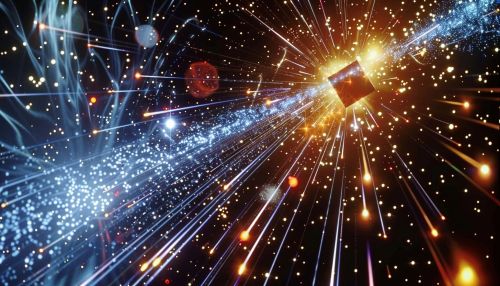W and Z bosons
Introduction
The W and Z bosons are elementary particles that mediate the weak force, one of the four fundamental forces in nature. Named after their respective electric charges, W bosons can be either positively or negatively charged, while Z bosons are neutral. These bosons are massive, with the W bosons being about 80.4 GeV/c² and the Z boson about 91.2 GeV/c². This makes them nearly 100 times more massive than a proton.


Discovery
The existence of the W and Z bosons was predicted by the unification of the electromagnetic and weak forces into the electroweak theory by Sheldon Glashow, Abdus Salam, and Steven Weinberg in the 1960s. The discovery of these particles, however, did not occur until the 1980s at CERN's Super Proton Synchrotron. The discovery of the W and Z bosons was a significant milestone in particle physics, confirming the electroweak theory and leading to the Nobel Prize in Physics for Glashow, Salam, and Weinberg in 1979.
Properties
W and Z bosons are gauge bosons, which means they are force carriers for the weak force. They are responsible for the weak nuclear force, which is involved in processes such as radioactive decay and nuclear fusion. The W bosons are responsible for charged current interactions, while the Z boson mediates neutral current interactions.
Interaction with Other Particles
W and Z bosons interact with other particles through the weak force. This interaction is responsible for many important processes in particle physics and cosmology. For example, in the sun, the fusion of hydrogen into helium is mediated by W bosons. In radioactive decay, a neutron can decay into a proton, an electron, and an antineutrino through the exchange of a W boson.
Role in the Standard Model
The W and Z bosons play a crucial role in the Standard Model of particle physics. They are part of the electroweak sector of the Standard Model, which unifies the electromagnetic and weak forces. The discovery of these bosons and their properties provided strong support for the Standard Model.
Future Research
While the properties of the W and Z bosons are well-established, there are still many open questions in particle physics that involve these particles. For example, the precise measurement of the W boson mass can provide constraints on the mass of the Higgs boson and the top quark, two other fundamental particles in the Standard Model. In addition, the study of W and Z bosons can provide insights into the nature of dark matter and the asymmetry between matter and antimatter in the universe.
